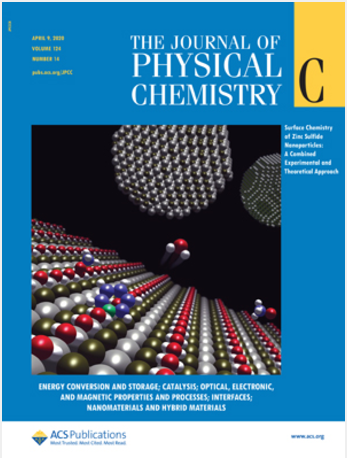Platinum Carbonyl Chini Clusters as Catalysts for Photocatalytic H2 Generation
IF 3.3
3区 化学
Q2 CHEMISTRY, PHYSICAL
引用次数: 0
Abstract
Platinum Chini clusters with a general formula [Pt3(CO)6]n2– are formed by stacked Pt3 units. They have fascinating electronic and optical properties that can be tuned with n. In the current manuscript, the electronic, photochemical, and charge transport properties of the platinum Chini clusters are studied with the density functional theory (PBE and CAM-B3LYP/6-31G(d,p)+LANL2DZ) as a function of their nuclearity number n. Our theoretical predictions are supported by experimental proof of concept, in which synthesized Chini clusters are deposited as cocatalysts on TiO2 for photocatalytic hydrogen generation. We demonstrate that smaller clusters (n = 4) are more effective than larger ones (n = 7–8), and that composites having lower Pt content perform better.

铂羰基Chini簇光催化制氢催化剂的研究
由Pt3单元叠加形成的铂Chini团簇具有通式[Pt3(CO)6]n2 -。它们具有迷人的电子和光学性质,可以用n进行调谐。在目前的手稿中,用密度泛函理论(PBE和CAM-B3LYP/6-31G(d,p)+LANL2DZ)研究了铂Chini团簇的电子,光化学和电荷输运性质,作为其核数n的函数。我们的理论预测得到了实验概念证明的支持。将合成的Chini簇作为助催化剂沉积在TiO2上,用于光催化制氢。我们证明了较小的簇(n = 4)比较大的簇(n = 7-8)更有效,并且Pt含量较低的复合材料性能更好。
本文章由计算机程序翻译,如有差异,请以英文原文为准。
求助全文
约1分钟内获得全文
求助全文
来源期刊

The Journal of Physical Chemistry C
化学-材料科学:综合
CiteScore
6.50
自引率
8.10%
发文量
2047
审稿时长
1.8 months
期刊介绍:
The Journal of Physical Chemistry A/B/C is devoted to reporting new and original experimental and theoretical basic research of interest to physical chemists, biophysical chemists, and chemical physicists.
 求助内容:
求助内容: 应助结果提醒方式:
应助结果提醒方式:


